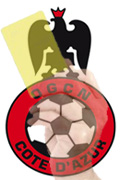“I do not contest the sanctions that have been imposed on us, but I regret seeing, for example, Ederson and Koné being repeatedly fouled in midfield.” Frédéric Antonetti, the coach of OGC Nice, after the Nice-Sochaux match on Saturday (0-0), contested the refereeing by Mr. Gautier. He does not criticize the warnings given to the Eaglets nor the expulsion of Drissa Diakité, who made a spectacular but unintended tackle that was very dangerous. In trying to interpret and put Frédéric Antonetti’s remarks into perspective, one might say that he is questioning the rules. For him, it is abnormal for a team committing repeated non-dangerous fouls against the same players not to be penalized more severely.
Two sports have found a solution, and football, if it were not so conservative, could be inspired by them: Basketball, where a player cannot commit more than five fouls, and rugby, with its white card introduced a few years ago and since removed, where the fourth player punished for a technical foul was sent off for ten minutes.
A small caveat, nonetheless: OGC Nice is not the least foul-prone team (see document). The Côte d’Azur club is mid-table in eighth place with an average of 16.83 fouls per match, 24 yellow cards, and one red card in 13 matches, or a warning every 8.5 fouls. By comparison, Nancy receives a yellow card every 17 fouls, Paris every 10, and Sochaux every 8.6 fouls. Nancy is the team that fares best, but Nice is about average. Nothing very unfair.
What makes the Eaglets strong since their return to Ligue 1 is having players with the temperament capable of excelling for their colors, like Cyril Rool, Florent Balmont, Pancho Abardonado this season, and previously Cédric Varrault or Everson who have since left. If the club continues its adventure in L1, it is largely thanks to this. Therefore, one must accept the disadvantages. The referees quickly issue yellow cards, and one has to cope… it is part of the rules of football.


